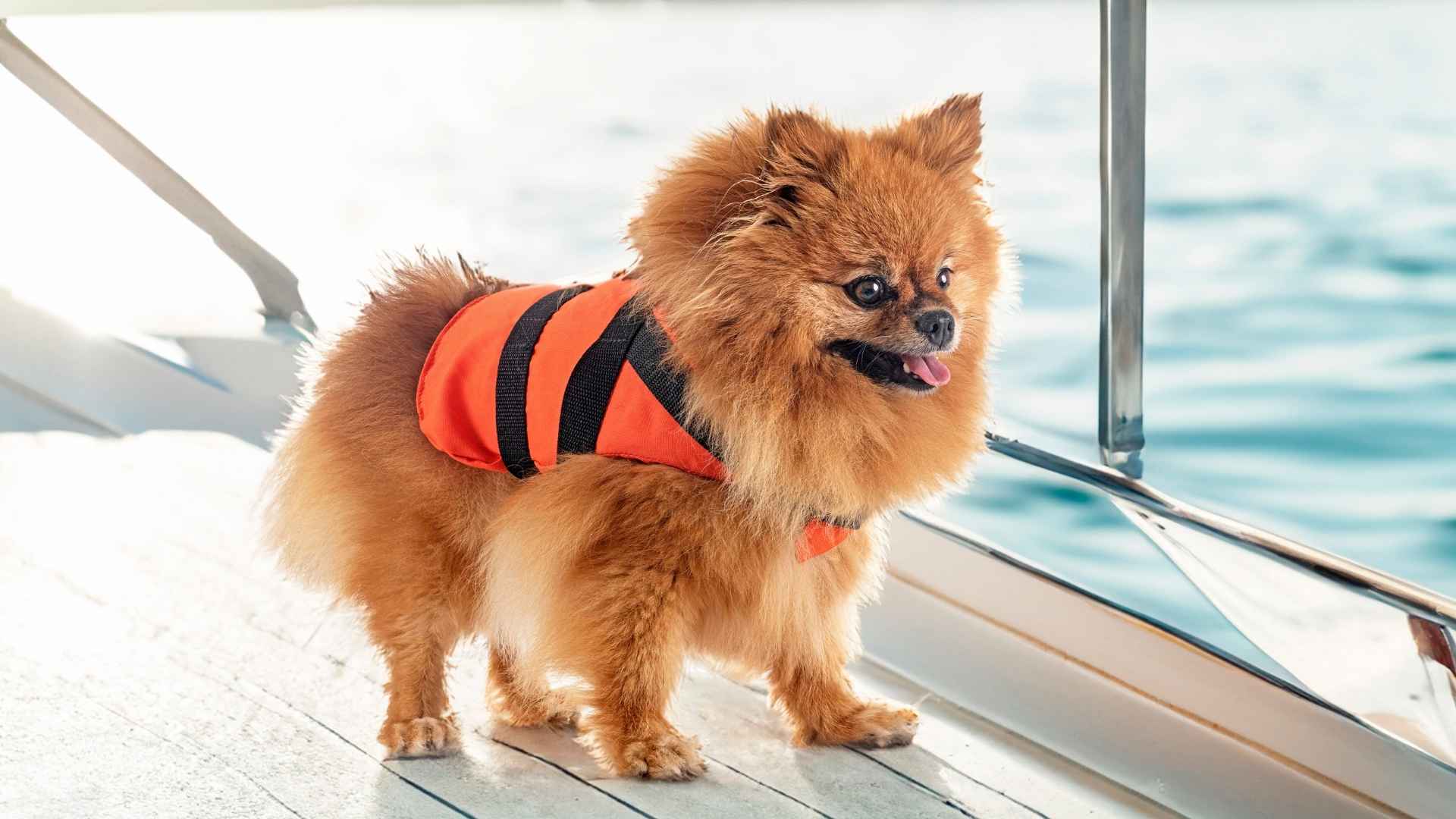Few experiences compare to the joy of feeling the ocean breeze, watching the horizon roll by, and having your loyal canine companion right beside you. For dog lovers who find peace on the open water, ferry travel offers an exciting way to include their pets in every seafaring adventure. Fortunately, some dog breeds are not only comfortable on boats but actually love it—calm, curious, and often drawn to the water, these pups make perfect ferry travel buddies.
While ferry trips can be stressful for some animals, there are certain breeds that adapt remarkably well. Whether it’s the sound of waves lapping against the hull or the thrill of exploring a new coastline, these dogs embrace the journey just as much as the destination. Their natural confidence, balanced temperament, and trainability play a big role in how well they handle maritime adventures.
So, if you’re planning your next trip across the bay or an island-hopping escapade, consider these dog breeds that thrive on ferry rides. With the right companion, the journey can be just as enjoyable as the port of call.
Dog Breeds That Love Travel On Ferries
1. Irish Water Spaniel
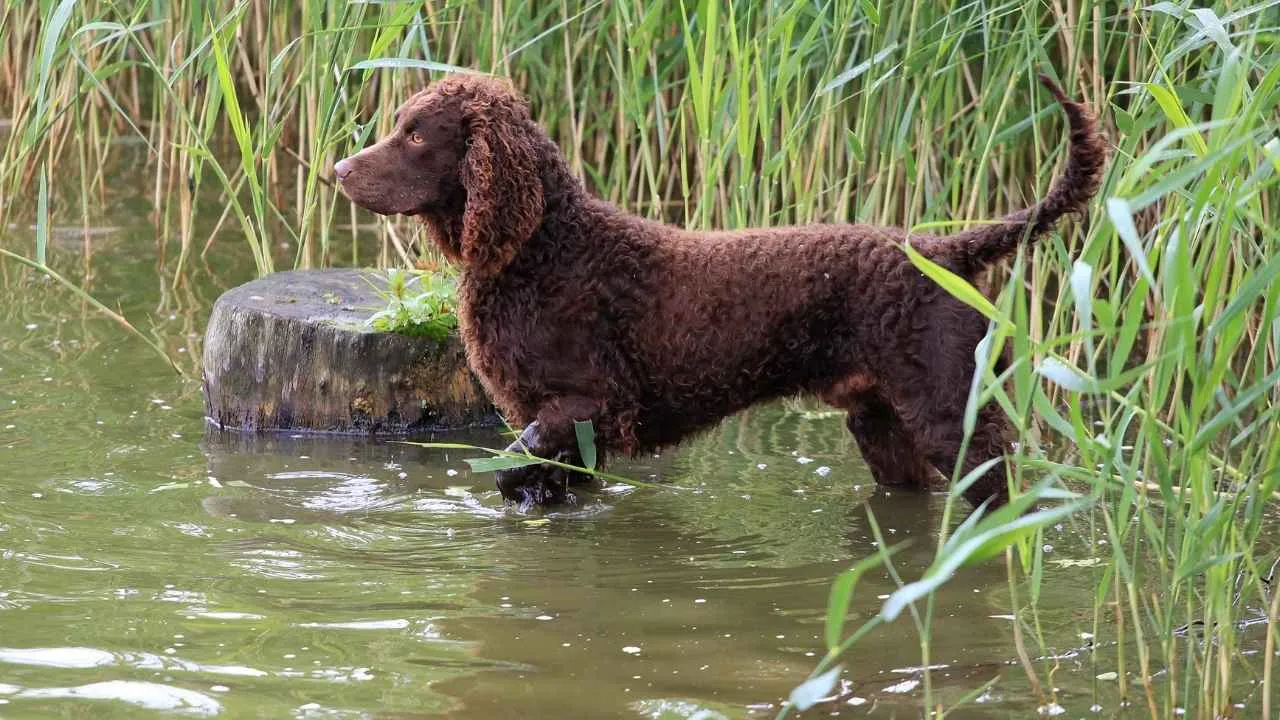
Sometimes referred to as the “clown of the spaniel family,” the Irish Water Spaniel is among the tallest and most distinctive of the spaniel breeds. Originating from Ireland, this breed was developed for retrieving game from water, a skill made easier by its tightly curled, liver-colored, waterproof coat and unique tapering “rat tail.”
Standing between 21 and 24 inches tall and weighing 55 to 65 pounds, according to the AKC, it is the tallest of the AKC-recognized spaniels, placing it between the medium and large dog categories in terms of size.
The Irish Water Spaniel’s chiselled head and signature topknot of curls are instantly recognizable, while its energetic and intelligent personality makes it a standout companion on water adventures. Although large, they are highly trainable and excel at off-leash behavior, making them great ferry travel companions if your boat has enough room.
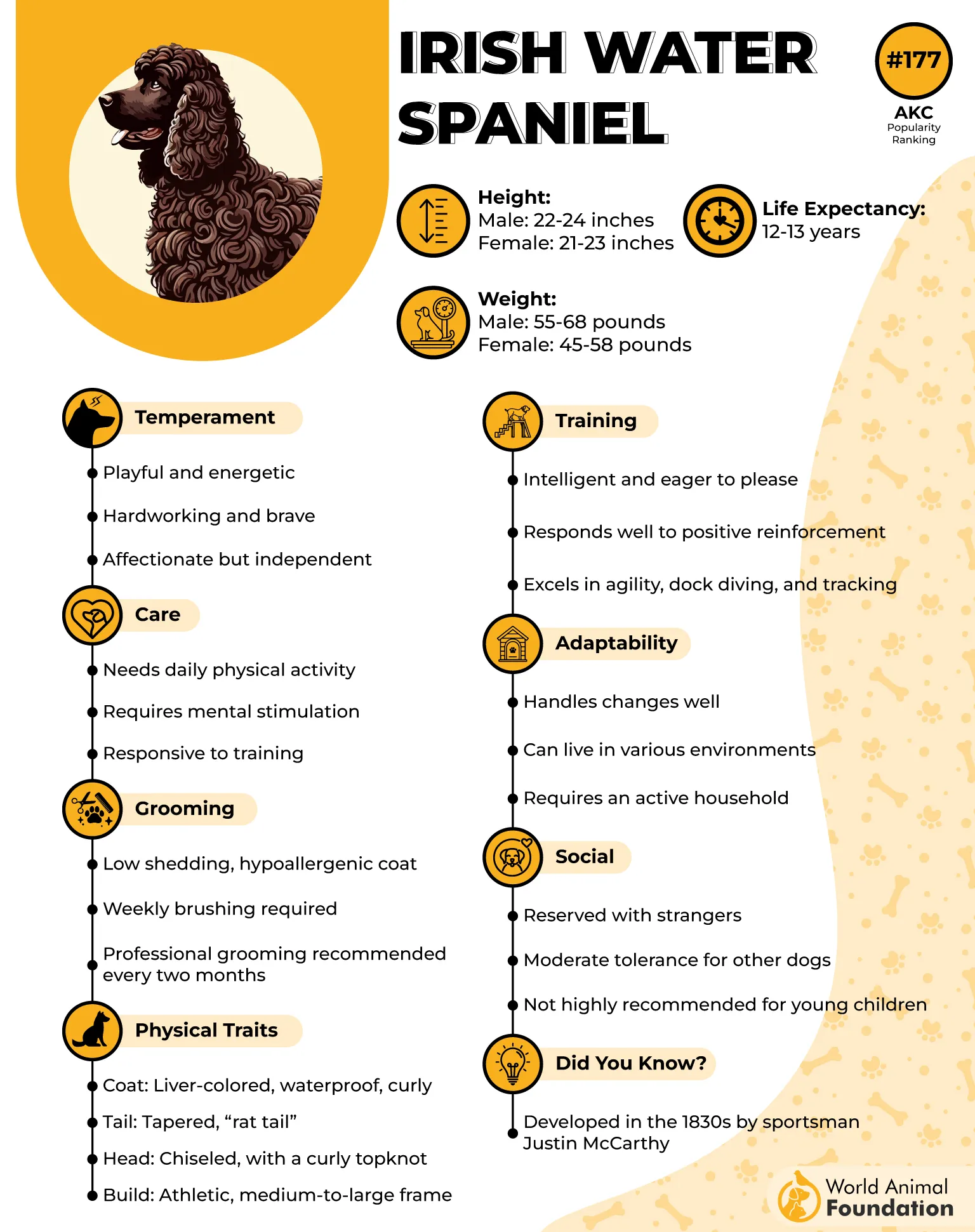
Ideal Owner
Best suited for active families or individuals who enjoy long walks and water-based adventures, the Irish Water Spaniel thrives in households with older children or teens. Those interested in engaging their dog in sports or structured training will find this breed highly responsive and enthusiastic.
Fun Fact: The Irish Water Spaniel’s webbed feet and waterproof coat make it an exceptional swimmer, perfect for water-bound excursions.
2. Spanish Water Dog

The Spanish Water Dog, also known as “Perro de Agua Español,” is a spirited, medium-sized breed originally developed in Spain for herding livestock and retrieving waterfowl. Males typically reach just under 20 inches in height and weigh between 30 to 50 pounds.
Distinguished by their tight, curly, and woolly coat—often forming cords when grown out—the breed is rustic in appearance and comes in a variety of colors, including black, brown, beige, white, or mixed patterns.
PetMD notes that the dogs’ water-repellent coats make them well-suited for different weather conditions and the best dog breed for water-based activities such as swimming. Historically, their agility, intelligence, and keen sense of duty made them invaluable on farms and fishing boats alike.
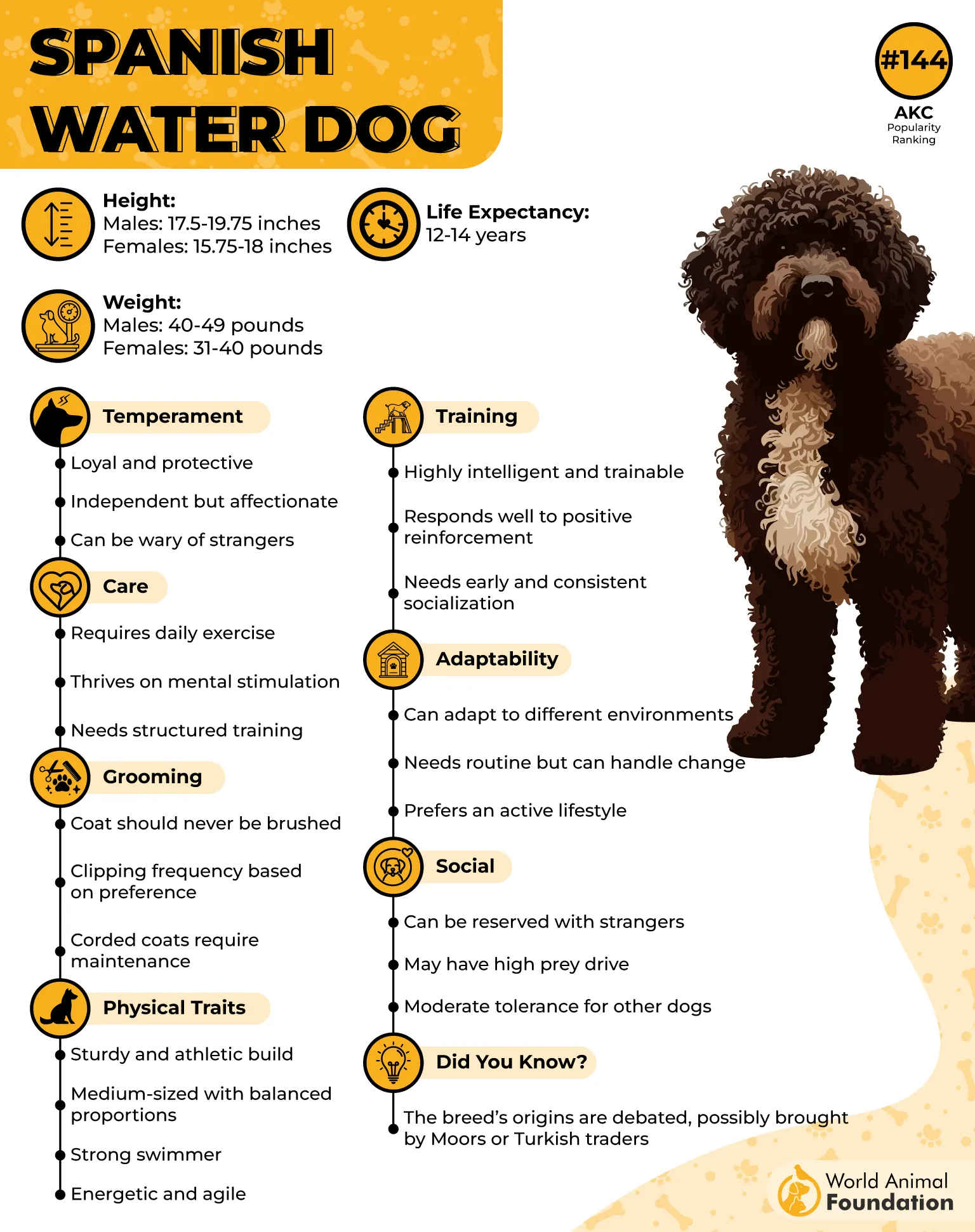
Ideal Owner
This breed is best suited to energetic, outdoorsy individuals or families who can match their high activity level. Spanish Water Dogs thrive when given consistent mental stimulation and physical challenges.
While they are affectionate and loyal, they also exhibit strong herding instincts and can be overly protective, making them a more suitable choice for experienced dog owners who enjoy active, adventurous lifestyles, especially those involving water-based travel or frequent ferry rides.
A fun fact: the Spanish Water Dog’s buoyant, low-maintenance coat was historically prized by fishermen for aiding the dog’s swimming ability and making post-dip grooming simple.
3. Portuguese Water Dog

Also known as Cão de Água Português, the Portuguese Water Dog is a medium-sized, robust breed with a curly, water-resistant coat that barely sheds. Originally developed along the coast of Portugal, these dogs assisted fishermen by herding fish into nets, retrieving lost tackle, and acting as ship-to-shore couriers.
Males typically stand 20 to 23 inches tall and weigh between 42 and 60 pounds, while females range from 17 to 21 inches and 35 to 50 pounds. Their tight curls, athletic build, and love of the sea make them perfectly suited for aquatic environments and ferry travel.
WebMD states that Portuguese Water Dogs are easygoing companions who typically get along very well with children and other dogs. Energetic and eager to please, they thrive on activity and stimulation both mentally and physically. The breed belongs to the Working Group and generally enjoys a life span of 11 to 13 years.
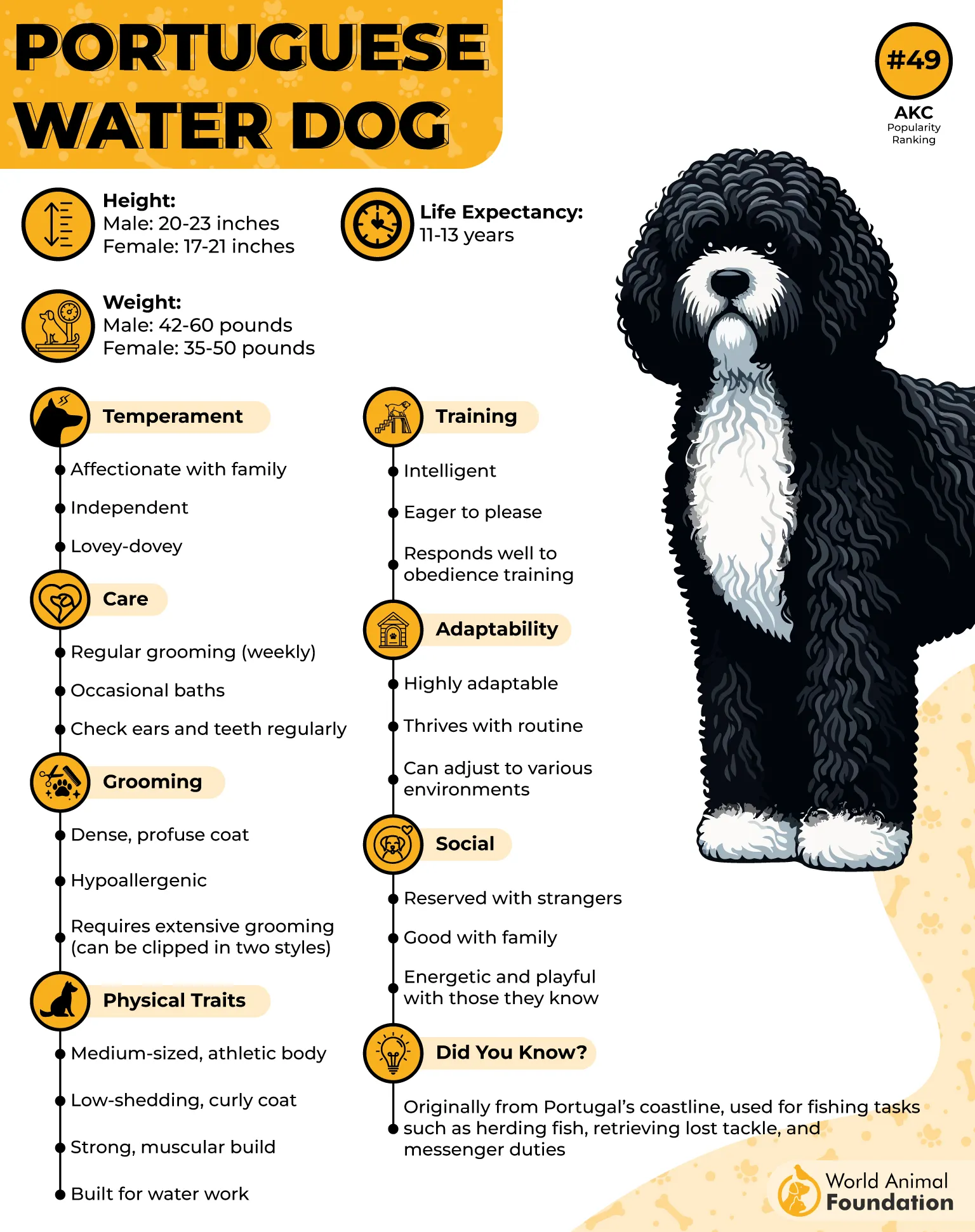
Ideal Owner
The ideal companion for a Portuguese Water Dog is someone who enjoys outdoor adventures, frequent beach visits, and interactive play. Owners who lead active lifestyles with regular access to parks, open fields, or lakes will find this breed a joyful, tireless partner. Their intelligence and agility also make them easy to train for travel etiquette.
Fun Fact: This breed can be styled in a distinctive “lion clip” or the more practical “retriever clip.”
4. Labrador Retriever

A beloved staple among family pets and adventure companions, the Labrador Retriever, often simply called the “Lab,” is the epitome of versatility and enthusiasm. Originating from Newfoundland, Canada, these dogs were bred to retrieve fish and game in icy waters, which is why they remain naturals around watercraft and ferries today.
Labs are sturdy, athletic dogs standing 21.5 to 24.5 inches tall and weighing between 55 to 80 pounds. Their waterproof double coat, webbed feet, and thick “otter tail” are key features that make them excellent swimmers and confident on boat decks.
Coat colors include yellow, black, and chocolate, and their ever-friendly demeanor makes them quick favorites among travelers. Labs are part of the Sporting Group and typically live 10 to 12 years.
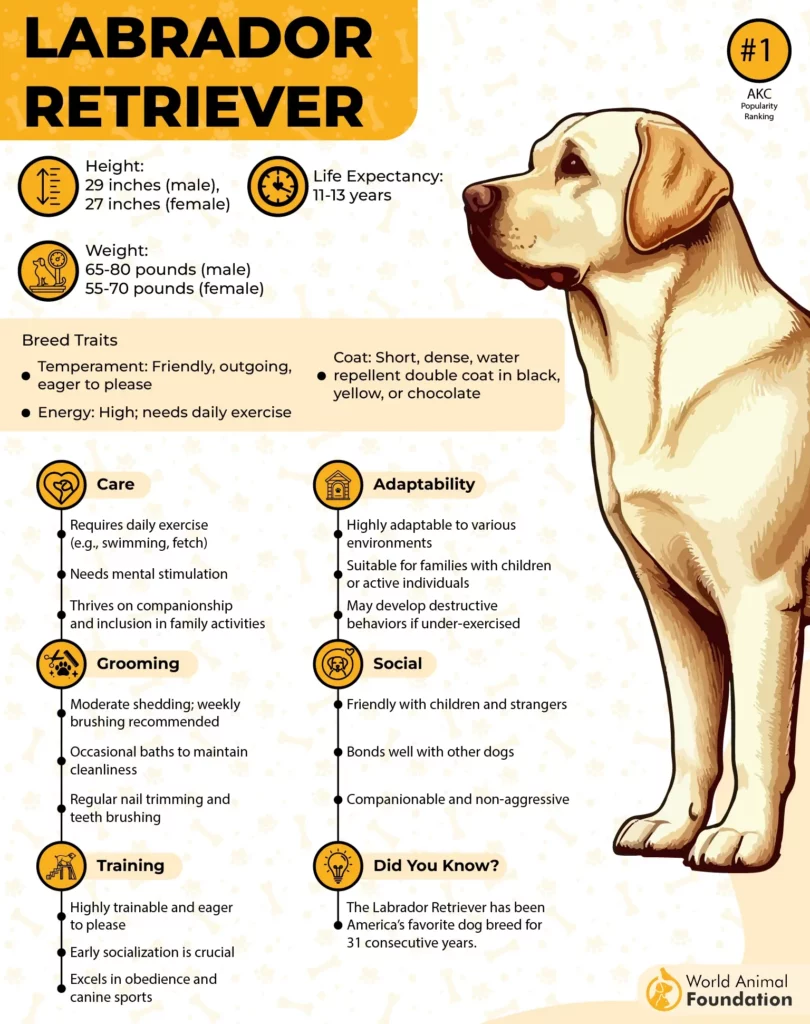
Ideal Owner
Labrador Retrievers are a perfect fit for individuals or families who lead an active lifestyle and love spending time near water.

Ideal owners should have a boat-friendly environment and enjoy outdoor activities like swimming, hiking, or even dog sports. A Lab thrives best when included in family adventures and water-based outings.
Fun Fact: Labs are frequently seen lounging at the front of boats, keeping watch like seasoned sailors, ready for a quick dip or game of fetch at sea.
5. Golden Retriever

Originally developed in the Scottish Highlands during the 19th century, the Golden Retriever—famed for its radiant golden coat and gentle temperament—was bred to retrieve waterfowl from both land and water.
Standing between 21.5 to 24 inches tall and weighing 55 to 75 pounds, this athletic and eager-to-please breed is part of the Sporting Group and typically lives 10 to 12 years. Its lustrous, water-resistant coat, strong physique, and affinity for swimming make it not just a favorite family companion but also a superb ferry-travel partner.
Trainable and trustworthy, Goldens adapt well to different environments, including boat decks and seaside adventures, provided they are supervised and wear a proper life jacket.
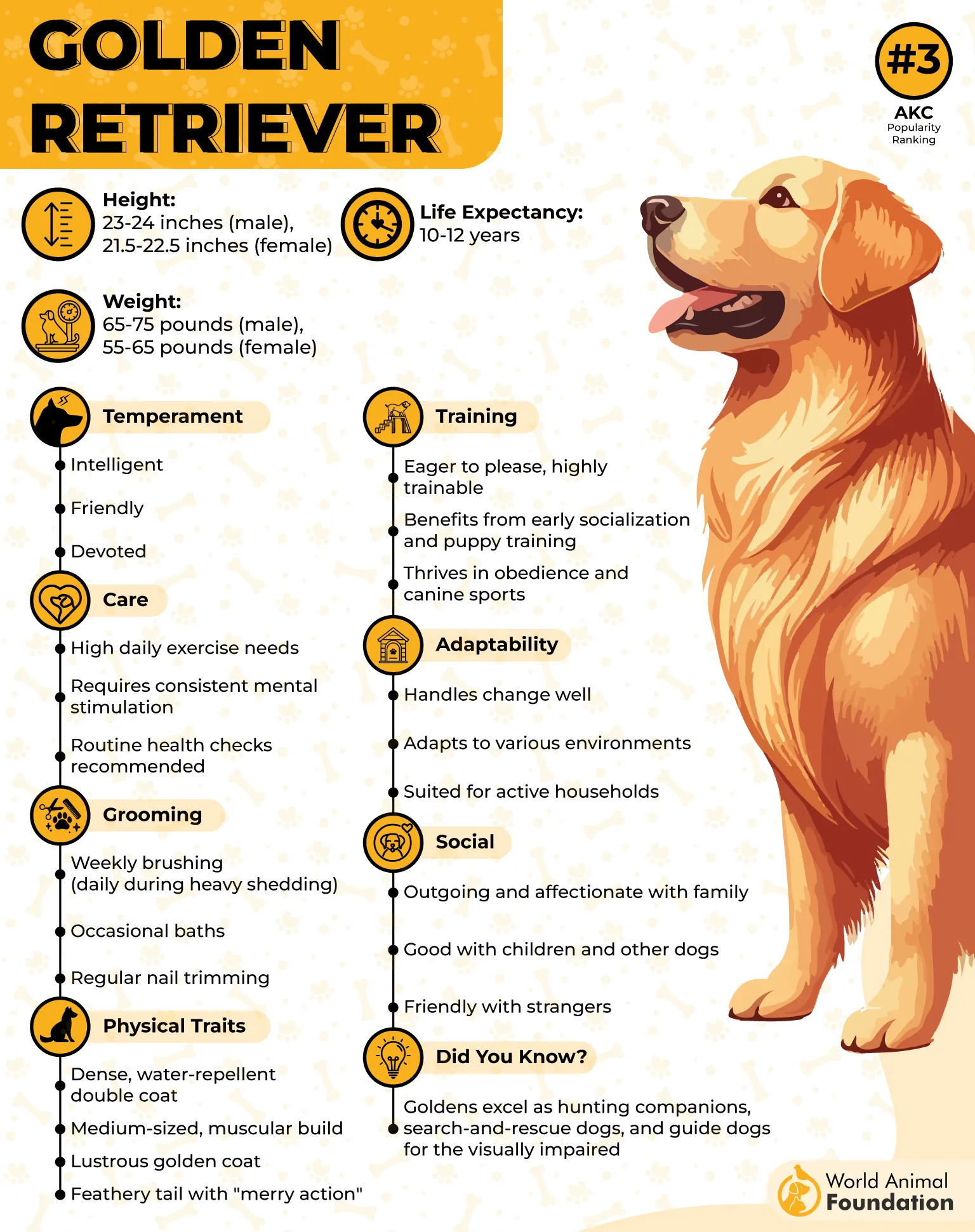
Ideal Owner
Golden Retrievers thrive with families or individuals who enjoy outdoor excursions, including aquatic outings. Ideal owners are those who can offer a balanced lifestyle filled with affection, regular physical activity, and consistent training. Their friendly disposition and patience make them especially suited for households with children or other pets.
Fun Fact: Goldens love to swim, but they aren’t the fastest in the water—they swim with enthusiastic, steady strokes and will eagerly fetch toys tossed overboard.
6. Chesapeake Bay Retriever

Originally bred along Maryland’s Chesapeake Bay, the Chesapeake Bay Retriever—affectionately known as the “Chessie”—is a rugged and loyal water dog. With a heritage tied to retrieving ducks from freezing waters, this breed has developed a thick, oily, wavy coat that provides natural insulation against the cold, making it ideal for chilly ferry crossings or coastal adventures.
Males can stand between 21 to 26 inches and weigh up to 80 pounds. Their powerful build and medium size offer both agility and strength, qualities that serve well on boat decks and ramps. With expressive amber eyes, a devoted nature, and a quiet determination, Chessies are excellent watchdogs and adaptable companions for life at sea.
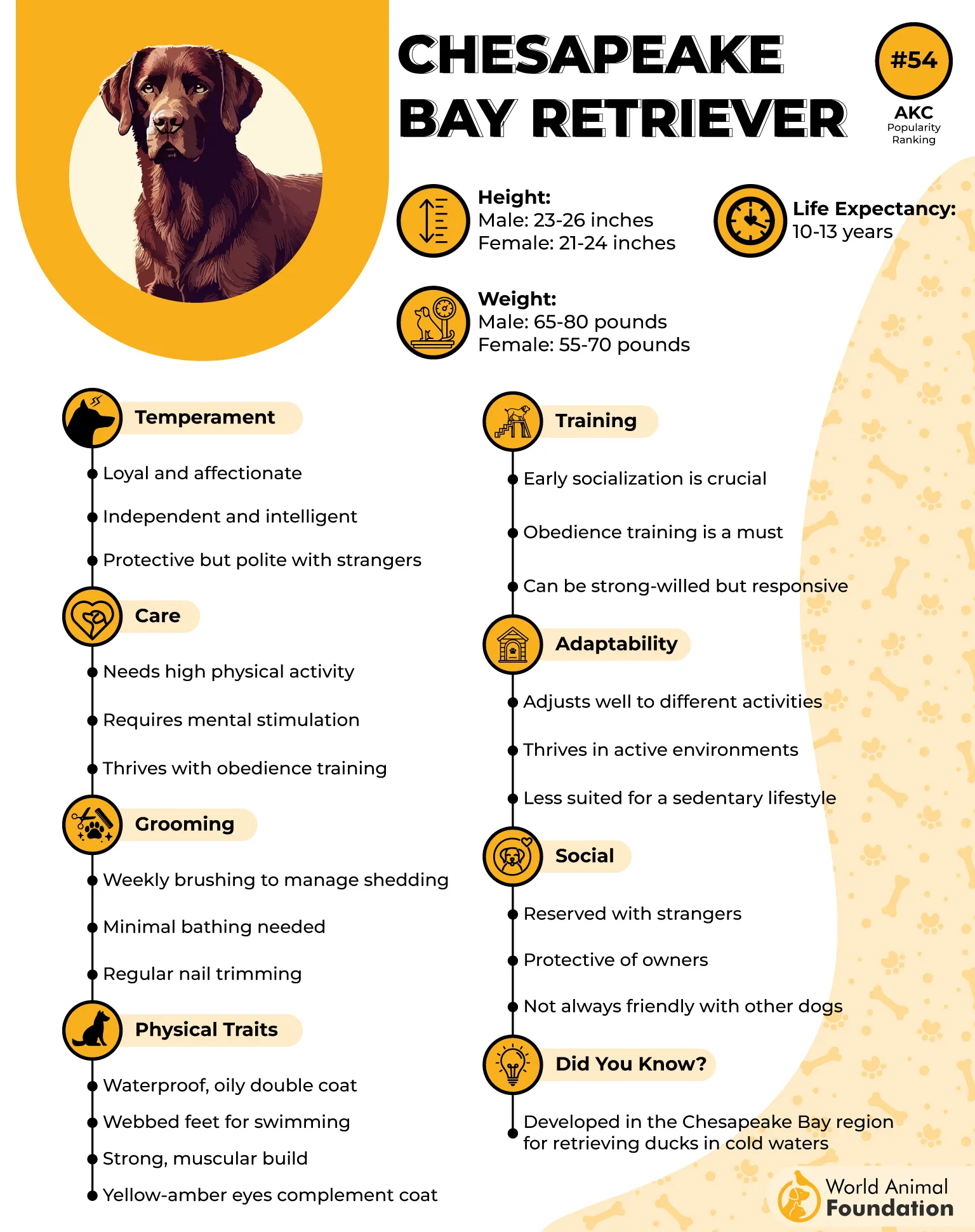
Ideal Owner
The ideal companion for a Chesapeake Bay Retriever is someone who enjoys being outdoors, doesn’t mind wet or muddy conditions, and has time for games involving swimming or scent-based play. Ferry-loving adventurers who relish nature and water-based activities will find this breed to be a spirited and dependable travel buddy.
Fun Fact:
The breed’s origin traces back to two Newfoundland pups rescued from a shipwreck in 1807—Sailor and Canton—who became the foundation for this tenacious, water-loving retriever.
7. Newfoundland

The Newfoundland, affectionately known as the “gentle giant of the sea,” hails from the Canadian island of the same name. Originally developed to assist fishermen, these dogs were bred to haul nets, rescue people, and retrieve gear from icy waters.
Standing up to 28 inches tall and weighing as much as 150 pounds, Newfoundlands are impressively large yet incredibly sweet-natured. Their dense, water-resistant coat, webbed feet, and powerful build make them natural swimmers, capable of diving into water and hauling even people to safety.
Recognized as part of the Working Group, they typically live between 9 to 10 years and come in shades like black, brown, gray, and the striking black-and-white “Landseer” pattern.
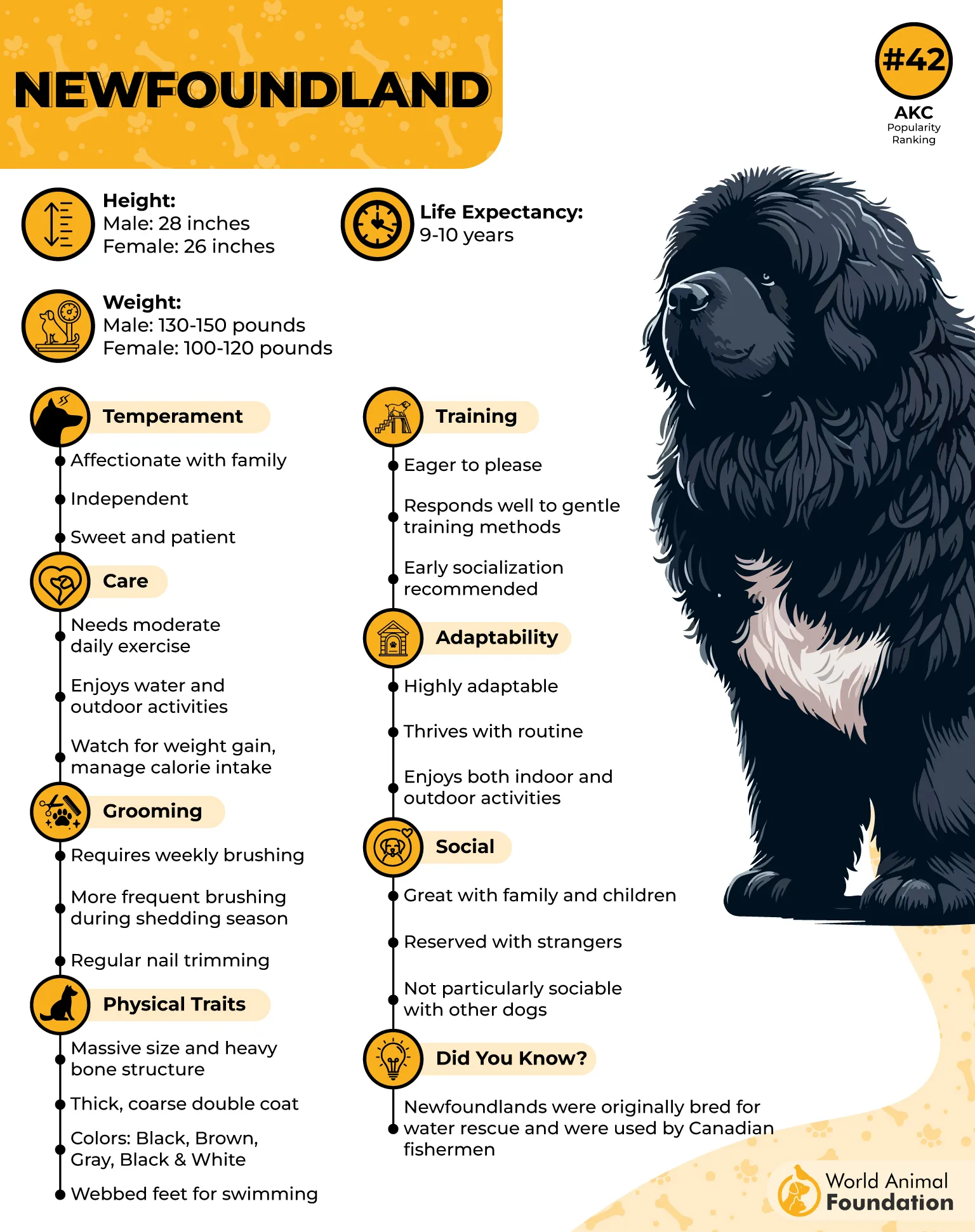
Ideal Owner
The ideal Newfoundland owner is someone with a spacious environment—perhaps even a boat owner—who can accommodate the breed’s massive size and water-loving nature.
These dogs thrive in the company of gentle, active individuals or families who enjoy outdoor adventures and appreciate calm, affectionate companionship. They require someone who doesn’t mind grooming maintenance after aquatic escapades.
Fun Fact: Newfoundlands have historically been known to jump into water to rescue drowning people, thanks to their natural swimming instincts and strength.
Conclusion
Whether you’re setting sail across serene waters or planning road trips to distant shores, bringing your furry companion along can make the adventure even more special. While most dogs enjoy car rides, only particular breeds are truly at ease navigating public transport, long distances, and life aboard ferries. Breeds like the Australian Cattle Dog, known for their resilience and trainability, may not have been covered earlier, but deserve a spot on your travel radar for their adaptability and love for movement.
Ferries often offer pet-friendly areas, designated areas on the car deck, or even onboard cabins to ensure a comfortable journey for both humans and their pooch. Make sure your dog has a secure crate, access to food, and a spot to rest or sit without stress. Not all dogs fit easily into the bustle of strangers and rules aboard ferries—but with the right breed and a bit of preparation, you’ll both be free to explore the world together. Luckily, the right match can make all the difference.


